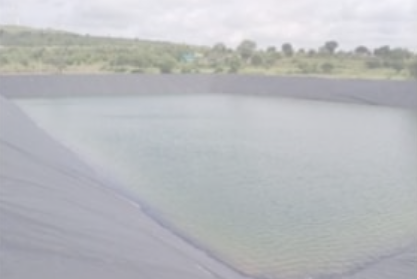In the field of fish farming and fishery sectors, the foundation of a successful fish farming venture is based on effective pond administration. A essential component in this setup is the HDPE (High-Density Polyethylene) fish pond liner, a reliable and environmentally friendly choice for creating and keeping fish ponds.
Grasping HDPE Fish Pond Liners
HDPE fish pond liners are crafted from High-Density Polyethylene, a synthetic thermoplastic material known for its exceptional longevity, toughness, and ability to withstand environmental factors. These liners are specially made to create a leak-proof shield within fish ponds, guaranteeing water conservation and preventing leakage or seepage.

Key Characteristics of HDPE Fish Pond Liners
Durability: HDPE fish pond liners are famous for their strength and endurance against harsh natural elements, including UV radiation, very high or low temperatures, and the ordinary deterioration linked to aquaculture.
Versatility: These liners are highly flexible and can mold to the form and outlines of the pond, ensuring a secure and snug fit.
Chemical Resistance: HDPE liners are impervious to various substances, including those used in aquaculture for water purification and pathogen management, maintaining the durability of the liner.
Minimal Upkeep: HDPE fish pond liners require very little upkeep, contributing to cost-effectiveness and ease of pond management.
Uses for HDPE Fish Pond Liners
HDPE fish pond liners act as the base for a wide range of aquaculture uses. Here are some typical uses:
Aquaculture: HDPE liners are essential for establishing and covering fish ponds, ensuring water retention and preventing soil contamination.
Prawn Cultivation: These liners are also used in shrimp farming to create and sustain ponds for shrimp cultivation.
Breeding Facilities: In fish and shrimp hatcheries, HDPE liners are employed in containers and raceways for rearing and breeding purposes.
Aquatic Farming Studies: High-Density Polyethylene liners are used in aquatic farming research centers needing regulated environments for scientific studies.
Advantages of Utilizing HDPE Fish Pond Liners
Moisture Control: High-Density Polyethylene liners form a dependable shield that prevents water seepage, maintaining steady water levels in aquaculture ponds. This is crucial for the vitality and expansion of water species.
Robustness: These liners are built to last, resisting the challenges of aquaculture operations and ecological influences over an extended lifespan.
Biosecurity: HDPE liners help maintain a sanitized and managed habitat in fish ponds, decreasing the likelihood of infection spread and impurity.
Environmental Sustainability: Plastic pond liners are made of a green material that keeps dangerous chemicals out of the water, making it safe for aquatic life and the surrounding ecosystem.
Summary
High-Density Polyethylene pond liners play a pivotal role for successful aquaculture and fisheries by providing a durable, flexible, and eco-friendly solution for managing ponds.
More info about bat hdpe see this useful internet page
